Luxury of Space: Designing a Dream Laundry Room
http://decor-ideas.org 08/23/2013 17:10 Decor Ideas
Few of us like to do laundry, and an ineffective space can make it worse. These aren't rooms we prioritize spending time in and money on, but making design decisions that emphasize comfort and practicality can make laundry less of a chore. Instead of shoving your washer and dryer into the basement, try following some of these tips to lay out a dream laundry room that you'll actually enjoy spending time in. Helpful additions — drying cupboards, raised appliances, great lighting — will boost your laundry room's style and function, too.
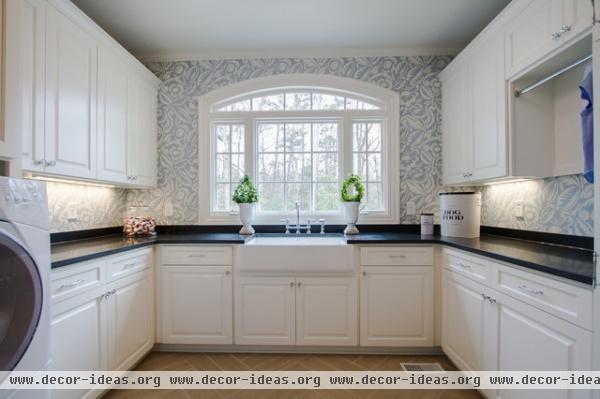
The 3 Laundry Zones
There are three different zones in every successful laundry room. The size of each zone will be different according to the laundry room's overall size, but having all three will make a laundry room more efficient.
First there's the preparation zone. This area should have space for baskets of dirty clothes, overhead cupboards and a sink to help you get your laundry ready for washing.
Tip: A deep sink will help when you're soaking woolen items and delicates. A swivel tap, like the one in this photo, can also make watering indoor plants a breeze.
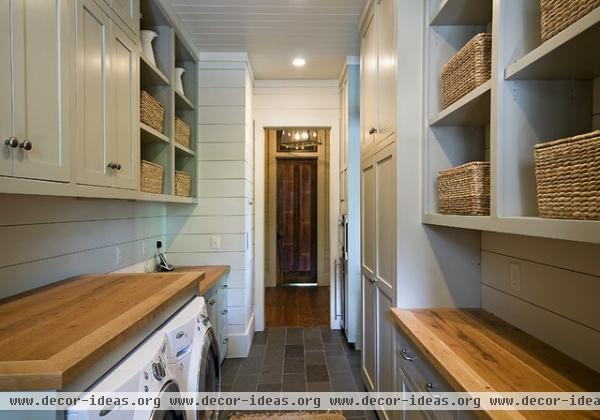
The wash and dry zone should include your washer and dryer, and shelving or other storage for your cleaning products.
Tip: If you are designing a galley laundry, make sure you have at least 36 inches in front of the washing machine (front-loading washers need less) and 42 inches in front of a dryer, so you can access your appliances without bumping into cabinets.
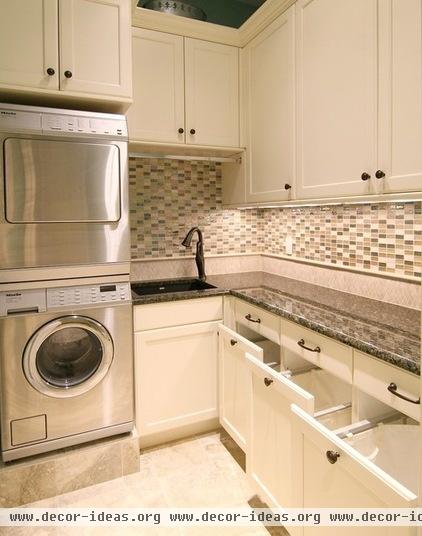
Create a folding zone with a basket for clean clothes, a countertop for folding and hanging rods for anything that needs to air dry.
Tip: If you are renovating your laundry, ask your cabinetmaker to install pullout baskets inside cupboards for your dirty and clean laundry.

Helpful Laundry Room Additions
Drying cupboards use high airflow and low heat to dry just about anything. These units come with adjustable pullout racks — some have up to 52 square feet of hanging space. They're great for cold climates and apartment living, or for anytime air drying large quantities of clothes or heavy-duty items is difficult.
Tip: Some drying cupboards are better than others, so do your homework. You'll also need adequate ducting or a very well-ventilated area for a drying cupboard to operate correctly.

Drying racks are less expensive than drying cupboards. Installing drying rods above your sink or countertop and leaving enough room at the back for hangers can help double up on available room, too.
Tip: If you'd rather not cramp your walls, consider using your ceiling to hold a drying rack. A pulley system can keep it neatly out of sight when it's not in use.
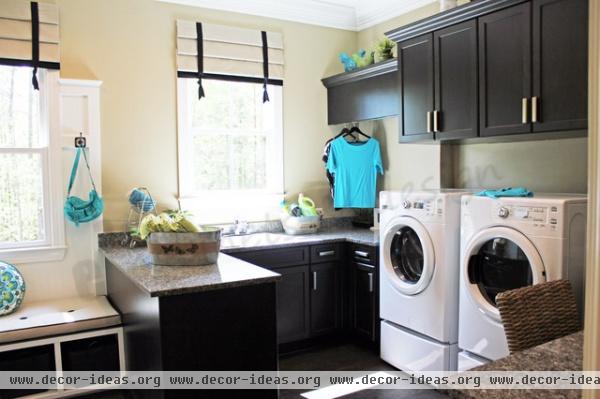
Raised appliances are great ergonomic options and can help free up storage space. Certain front-loading models come with an optional drawer underneath. If you don't have a lot of space for baskets, you can use one drawer for clean clothes and one for dirty items.
Tip: If your laundry is near bedrooms or living areas, choose appliances with extra insulation and quality suspension to keep the noise down. Dryers with no decibel rating and washing machines with a high-speed spin cycle of more than 1,000 revolutions per minute will likely be noisy.
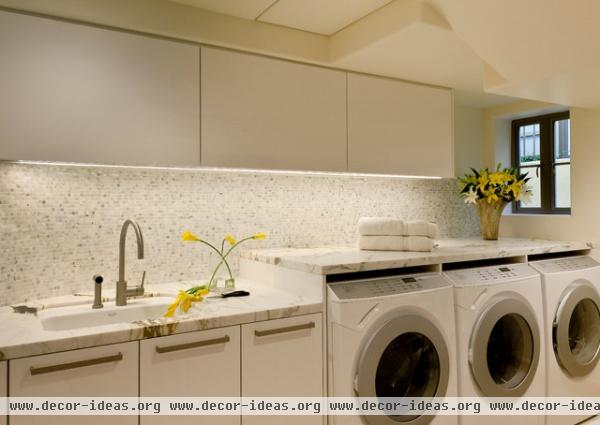
Ample lighting will help you see and fight stains better. Use a mixture of task lighting installed under your cabinetry and ambient ceiling lighting.
Tip: Install double wall sockets above countertops for clear task lighting. My rule of thumb is to install one fixture every 6 feet.
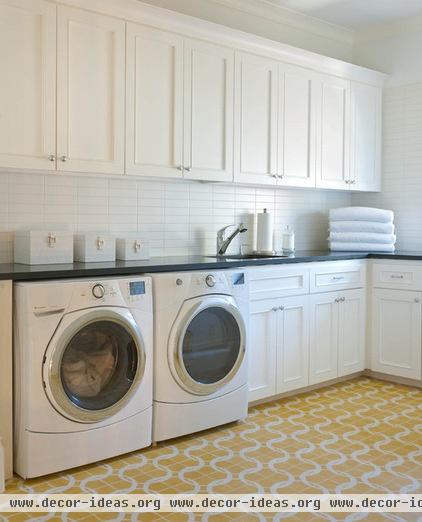
Laundry flooring requires just as much attention during the design process. With so much water in the room and a risk of leaks and flooding, you'll need to apply a waterproofing membrane before you lay down your flooring. Nonslip tiles are the most practical in high-moisture zones, since hardwood floors may swell over time. Tiles are also a clever way of bringing a colorful design feature into a bland laundry.
Tip: To prevent flooding ask your plumber to install a washing machine valve shutoff kit. These kits have a floor-mounted sensor that will detect any puddles and instantly shut off the water valve.
Related Articles Recommended












